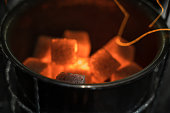Employing Thermal Film for Component Protection
페이지 정보
작성자 Eve Pulliam 작성일25-08-14 05:45 조회7회 댓글0건관련링크
본문

One of the primary benefits of using shrink film for electrical and electronic components is its ability to prevent moisture and dust from entering the package. This is particularly important for components that are susceptible to corrosion or damage from moisture. By sealing the components in a moisture-free environment, shrink film helps to ensure that they remain in good condition even when exposed to humid or dirty conditions.
Shrink film is also useful for storing and transporting electrical and electronic components. It prevents components from coming into contact with each other and experiencing friction. This can be a major problem when handling precise and intricate components. Additionally, the film provides a protective barrier that prevents components from coming into contact with one another.
Another benefit of using shrink film is its inexpensive nature compared to custom alternatives. Compared to other methods of protecting and storing electrical and electronic components, such as specialized containers and pouches, shrink film is relatively inexpensive. This makes it an attractive option for both small and large businesses.
When using shrink film for electrical and electronic components, there are a few things to keep in mind. First, the film must be specifically engineered for heat application. Using a film that is not designed for this purpose can result in inadequate shrinkage or harm to the film. Additionally, the film must be applied with precision to guarantee a flawless wrap.
In terms of the application process, shrink film can be applied using a variety of methods. Some common methods include using heat-based tools to seal the film. Or using a sealing device to apply a secure seal. The choice of method will depend on the specific requirements of the application and the type of film being used.
Overall, shrink film is a versatile and cost-effective method for protecting and storing electrical and electronic components. Its ability to prevent contamination and debris from entering the package, protect sensitive components during shipment, and act as a protective shield against electrical faults and نایلون شرینگ other issues makes it an attractive option for both small and large businesses.
In conclusion, the use of shrink film for electrical and electronic components is a easy and practical approach. With its many benefits, including versatility in use and application, shrink film is an attractive option for companies seeking to reduce their logistical complexity.
One last thing to keep in mind when using shrink film is to recycle the packaging materials when they have been utilized. While shrink film itself is not particularly environmentally hazardous, the materials used to enclose the packaging substance can be. By properly disposing of these materials manufacturers can help to minimize their ecological footprint and decrease packaging waste.
In the end, the use of shrink film for electrical and electronic components is a wise choice. Its many benefits, including versatility, efficiency, and protection of sensitive components, make it an attractive option for both small and big-scale companies.
